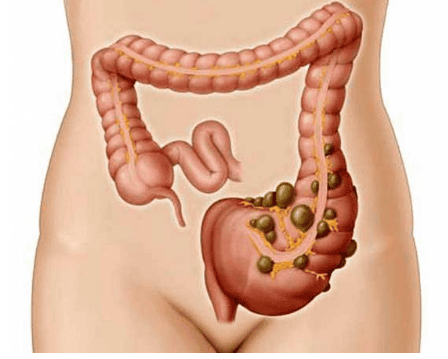This is an automatically translated article.
Lornoxicam contains the active ingredient Lornoxicam - belongs to the group of non-steroidal anti-inflammatory drugs. The drug is indicated in mild to moderate pain, treatment of pain caused by rheumatoid arthritis, osteoarthritis... Let's learn about the uses and dosage of Lornoxicam through the article below.
1. Uses of the drug Lornoxicam
1.1. Indications “What is Lornoxicam?”. Lornoxicam contains the active ingredient Lornoxicam, which is indicated in the following cases:
Short-term treatment of mild to moderate pain; Treatment of pain caused by rheumatoid arthritis and osteoarthritis. 1.2. Pharmacodynamics Lornoxicam belongs to the group of non-steroidal anti-inflammatory drugs, with antipyretic - analgesic - anti-inflammatory effects. The mechanism of action of Lornoxicam was determined to be a strong and non-selective inhibitor of the enzyme cyclooxygenase (COX-1 and COX-2), thereby reducing the synthesis of prostaglandins - mediators of pain, inflammation, and fever from archidonic acid. . However, unlike other NSAIDs, Lornoxicam's inhibition of cyclooxygenase does not increase leukotriene synthesis, which reduces the risk of adverse drug reactions.
1.3. Pharmacokinetics Absorption: Lornoxicam is rapidly and almost completely absorbed from the systemic circulation. Peak drug concentrations are reached 1 to 2 hours after oral administration. Bioavailability is about 90-100%. The bioavailability of Lornoxicam is not affected by first-pass hepatic metabolism. In addition, concomitant use of Lornoxicam with antacids did not affect the pharmacokinetics of the drug.
Distribution: Lornoxicam and its inactive metabolite are found in plasma. Approximately 99% of the drug is bound to plasma proteins (of which are mainly bound to albumin) and the degree of binding is independent of the drug concentration.
Metabolism: The drug is completely metabolised by CYP 2C9 to 5' - hydroxy - lornoxicam.
Elimination process: About 2/3 of a dose of Lornoxicam is eliminated by the liver and about 1/3 of the remaining dose is excreted by the kidneys as inactive. The half-life (t1/2) of the drug ranges from 3 to 4 hours.
2. Dosage of the drug Lornoxicam
The use of Lornixicam in pain relief - anti-inflammatory with dosage depends on the age and condition of the patient. Specifically as follows:Adults:
Treatment of acute pain: The recommended dose is 8-16mg/day divided into 2-3 times. The maximum drug dose is 16mg/day; Treatment of osteoarthritis, rheumatoid arthritis: The starting dose is 12mg/day. The dose can then be increased to a maximum of 16 mg/day. Children: Do not use Lornoxicam in the treatment of children.
Patients with renal failure, liver failure: The recommended dose is 12mg/day divided into several times for patients with mild to moderate hepatic and renal impairment.
The drug should be taken with plenty of water and should not be taken with food because it can reduce the absorption of the drug.

Thuốc Lornoxicam chứa hoạt chất Lornoxicam – thuộc nhóm thuốc kháng viêm không steroid
3. Lornoxicam side effects
Some side effects that may be encountered when using Lornoxicam are as follows:
Common side effects: Dizziness, mild and transient headache, conjunctivitis ...; Uncommon side effects: Insomnia, depression, weight change, loss of appetite, tinnitus...; Rare side effects: Anemia, pharyngitis, leukopenia, thrombocytopenia, bruising, prolonged bleeding time, anaphylaxis and hypersensitivity reactions, anxiety, confusion, agitation, confusion neurological dysfunction, migraine headaches, visual disturbances, aseptic meningitis...
4. Notes when using Lornoxicam
4.1. Contraindications The use of Lornoxicam is contraindicated in the following cases:
Patients with a history of serious hypersensitivity such as rhinitis, bronchospasm, urticaria or angioedema to Lornoxicam as well as to other NSAIDs , including Aspirin; Patients with cerebral hemorrhage, gastrointestinal bleeding; People with blood clotting disorders; People with a history of recurrent peptic ulcers or active peptic ulcers; Patients with severe liver failure; Patients with severe renal failure (serum creatinine concentration greater than 700 micromol/L); Patients with severe heart failure; People with low platelet count; Geriatric patients (<65 years old) who weigh less than 50kg and need urgent surgery; Pregnant women in the last 3 months of pregnancy. 4.2. Notes on use Some notes when using Lornoxicam are as follows:
Lornoxicam in particular and NSAIDs in general are capable of causing bleeding, ulceration and perforation of the gastrointestinal tract; The risk of ulceration increases with dose and duration of administration. Geriatric patients, patients with many risk factors or medical history have a higher rate of events than other subjects; To reduce the risk of side effects and events, the lowest effective dose of Lornoxicam should be used for the shortest possible time, and can be used in combination with a proton pump inhibitor or misoprostol... to helps to protect the gastric mucosa; The drug can increase the risk of cardiovascular events such as stroke, myocardial infarction ... Patients with congestive heart failure or uncontrolled hypertension should be cautious when using the drug due to the risk of edema, fluid retention; The drug Lornoxicam can cause some serious skin reactions such as Stevens - Johnson syndrome, exfoliative dermatitis, Lyell's syndrome ... In this case, it is necessary to stop using the drug; Lornoxicam should be used with caution in patients with existing or history of bronchial asthma, because the drug increases the production of agents that cause bronchospasm; The drug reduces the degree of platelet aggregation, which in turn leads to an increase in bleeding time. Patients with coagulopathy should have functional evaluation and close monitoring; Use of Lornoxicam may increase plasma transamines. In patients with liver failure (cirrhosis) susceptible to drug accumulation, thereby causing increased plasma drug concentrations even at therapeutic doses; Lornoxicam inhibits the biosynthesis of prostagladin cyclooxygenase, thereby reducing reproductive function. It is not recommended to use the drug in women who have difficulty conceiving or in women who want to become pregnant. Patients with mild renal impairment (serum creatinine level is about 150-300 micromol/l) need to have renal function assessed every 3 months and every 1-2 months for patients with moderate renal impairment (low blood pressure). serum creatinine level is about 300-700 micromol/l). Discontinue use in patients with acute renal failure; Lornoxicam should not be used concurrently with other NSAIDs and corticosteroids, including COX-2 selective agents. Cautions for use in lactating women: As with other prostaglandin synthesis inhibitors, lornoxicam May cause unwanted reactions in pregnant women as follows:
Women in the first 3 months of pregnancy: The drug increases the risk of miscarriage and fetal malformations; Women in the third trimester of pregnancy: The drug causes pulmonary and cardiac toxicity in the fetus (pulmonary hypertension, premature closure of the ductus arteriosus), impaired renal function leading to oligohydramnios; Pregnant women in labor: The drug inhibits uterine contractions, increases bleeding time, and prolongs labor. Therefore, caution should be exercised when prescribing the drug in pregnant women in the first 6 months and absolutely contraindicated in women in the last 3 months of pregnancy.
Note when using the drug in lactating women: There are no studies proving the excretion of Lornoxicam into breast milk. Therefore, caution should be exercised when Lornoxicam is used in lactating women.
Note when using the drug in drivers, operating machines: The drug can cause effects such as drowsiness, dizziness, so caution should be exercised when driving or operating machinery while taking Lornoxicam.

Chóng mặt, nhức đầu nhẹ là tác dụng phụ của thuốc Lornoxicam
5. Lornoxicam drug interactions
Drug-drug interactions:
Lornoxicam increases the concentration of cimetidine in the blood plasma; Concomitant use of Lornoxicam and warfarin, antiplatelet agents or anticoagulants increases bleeding time; The hypoglycaemic effect of sulfonylurea is increased when co-administered with Lornoxicam; Lornoxicam reduces the antihypertensive, diuretic effects of thiazide diuretics, loop diuretics and potassium-sparing diuretics; Lornoxicam reduces the effects of angiotensin II receptor blockers and ACE inhibitors; Drugs that increase the risk of an epidural or extraspinal hematoma during an epidural or spinal anesthesia procedure that uses heparin; The drug increases the risk of gastrointestinal bleeding or peptic ulcer when used in combination with selective serotonin reuptake inhibitors, corticosteroids; Lornoxicam is metabolized via CYP2C9, so it may interact with drugs that induce or inhibit CYP2C9 enzymes such as rifampicin, tranylcypromin, amiodarone, miconazole...; Lornoxicam increases the toxicity and concentration of anti-cancer drugs such as pemetrexed, tacrolimus, methotrexate, cyclosporine...; Drugs that reduce the clearance of digoxin; Lornoxicam increases the risk of seizures when used in combination with quinolone antibiotics; Lornoxicamr increases the concentration of lithium drug in the blood, thereby causing toxicity at therapeutic doses. Food-drug interactions: Food reduces the absorption of Lornoxicam by about 20%, so do not take the drug with food in case the patient needs quick pain relief.
Lornoxicam contains the active ingredient Lornoxicam - belongs to the group of non-steroidal anti-inflammatory drugs. The drug is indicated in the pain of mild to moderate, the treatment of pain caused by rheumatoid arthritis, osteoarthritis. To ensure the effectiveness of treatment and avoid unwanted side effects, patients need to use prescription drugs or consult a doctor or pharmacist for advice.
Follow Vinmec International General Hospital website to get more health, nutrition and beauty information to protect the health of yourself and your loved ones in your family.
Please dial HOTLINE for more information or register for an appointment HERE. Download MyVinmec app to make appointments faster and to manage your bookings easily.













